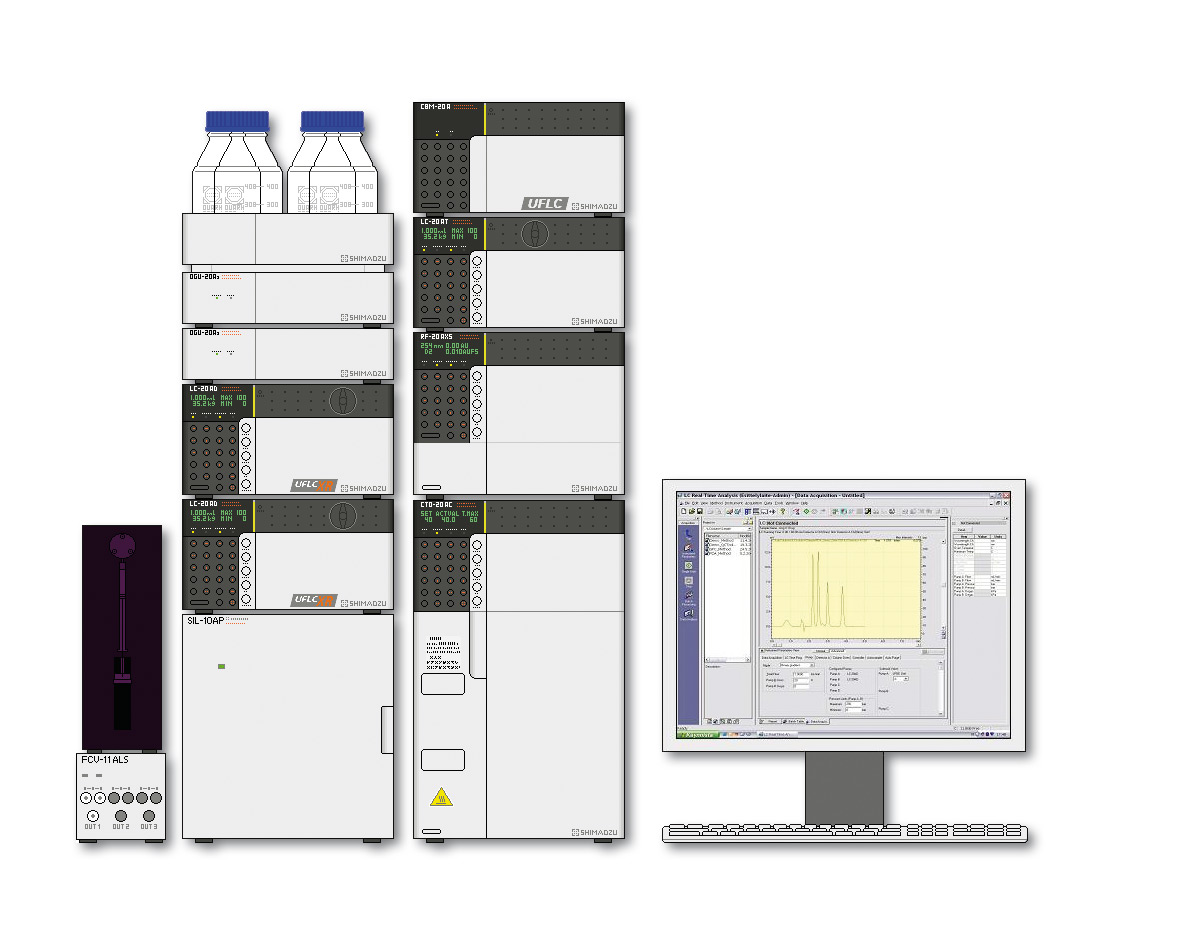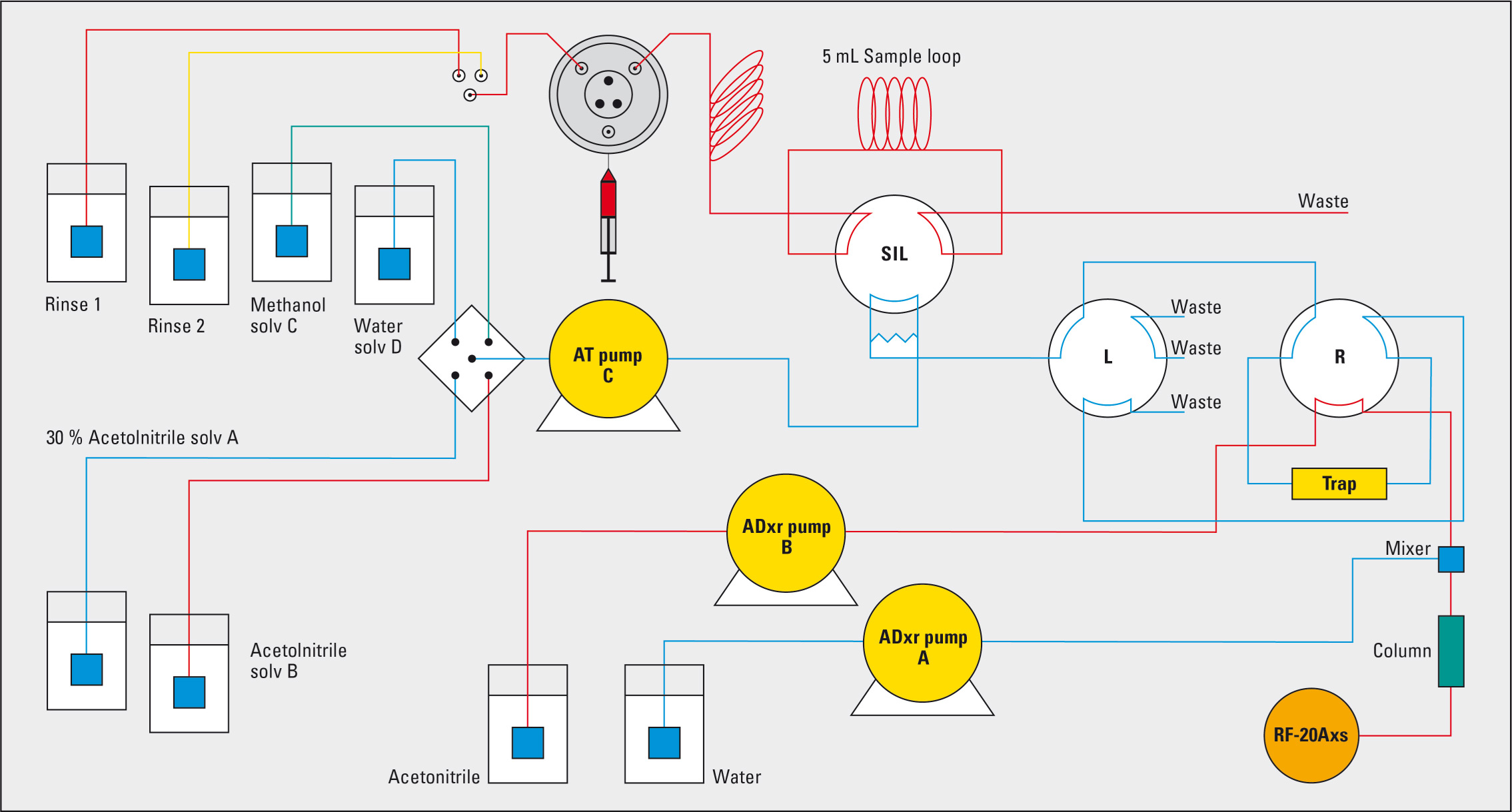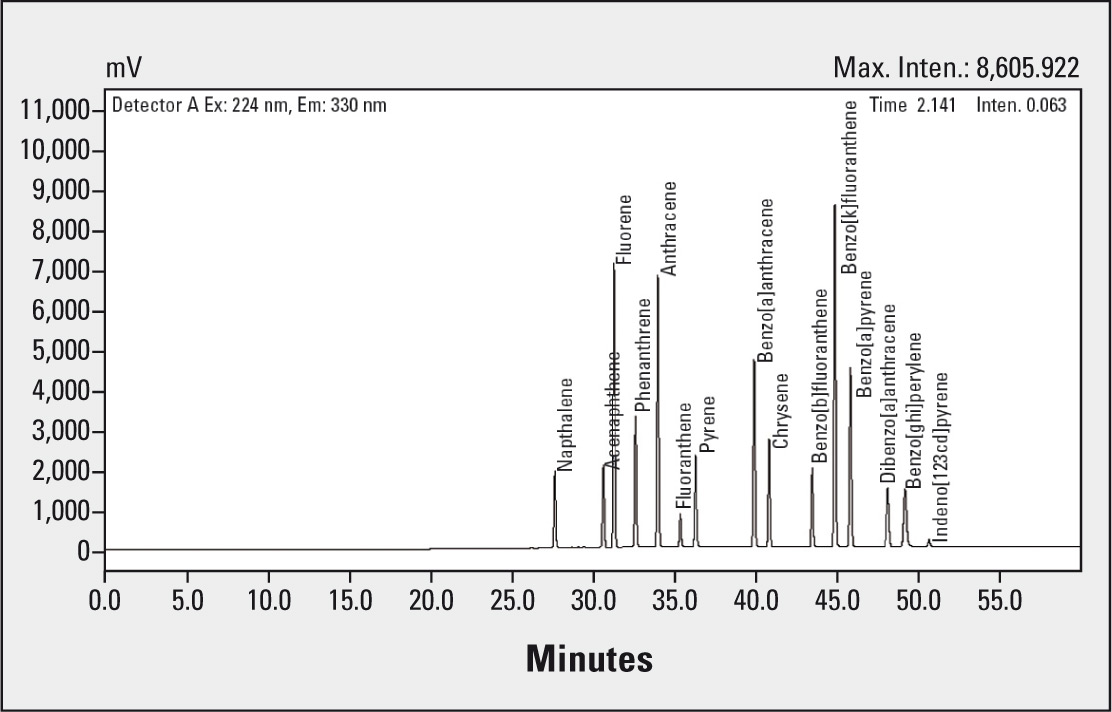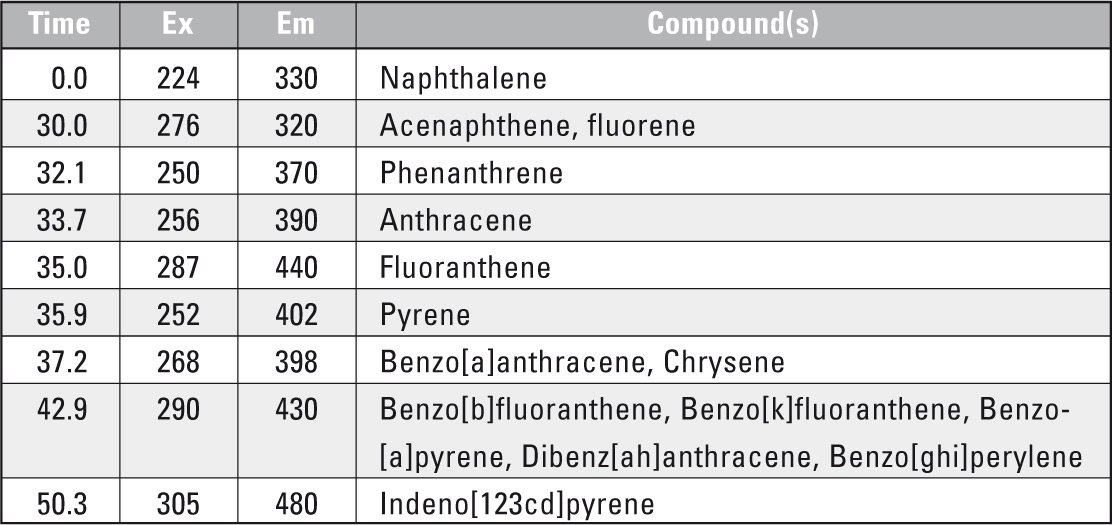Tracing PAH analysis with automated sample pretreatment
Online SPE method
Nowadays, there is an increasing demand to automate sample pre-treatment in order to reduce labour costs and increase productivity. In environmental laboratories trace enrichment is one of the most laborious tasks, as this involves activities such as liquid-liquid extraction (LLE), clean-up and re-concentration by solvent evaporation. In many cases, solid phase extraction (SPE) has successfully replaced LLE.
The use of online SPE requires less solvents and brings an additional benefit: there is no need to evaporate the extraction solvent, which is beneficial for overall recoveries of the target compounds. Moreover, all of the desired compounds will be detected. In case of off-line pretreatment an aliquot of the obtained extract is always injected into the analysis system.
 Figure 3: HPLC system
Figure 3: HPLC system
Another development in sample analysis is increasing throughput. In many cases, speed of analysis is the key factor. In environmental analysis however, samples are quite complex. Even where compounds are detected using more selective detection methods (e.g. fluorescence detection), enough separation power is still necessary to fully resolve all detected compounds. Otherwise false positive results may occur.
In some cases, the possibility of false positives can be ruled out or at least diminished by the use of a second detector. Sometimes, a fast analysis method is used for screening. When a positive result emerges it needs to be confirmed by a second technique. As stated above in environmental analysis, samples are very complex so only methods with very selective detection techniques (e.g. LCMS/ MS or GCMS) can be used for screening.
online SPE method for the determination of PAHs
Shimadzu Benelux together with Vitens, the largest drinking water producer in the Netherlands, has developed an online SPE (solid phase extraction) method for the determination of polycyclic aromatic hydrocarbons (PAH) in drinking water, ground water and surface water. The company supplies about 350 million m3 of drinking water annually to one third of the Netherlands and is internationally active in helping local drinking water companies in Africa, South America and Asia to improve their water supply and sanitation.
 Figure 2: Schematic representation of SPE system
Figure 2: Schematic representation of SPE system
The analysis of polycyclic hydrocarbons is primarily carried out using HPLC with UV or fluorescence detection or GCMS although the latter two are generally more accepted. The objective in this case was to combine SPE with an HPLC method with fluorescence detection.
As a starting point an HPLC method for the complete separation of 16 EPA priority PAHs was taken. The method incorporates a C18 reversed-phase column onto which a water-acetonitrile binary high pressure gradient was executed. Separation was further improved by lowering the column temperature to 20 °C and adjusting the steepness of the gradient from 25 to 100 % acetonitrile in 30 minutes. The minimum resolution between the critical pair (acenaphtylene and fluorene) was around 3.4. The low temperature of the column gives maximum resolution for the PAH compounds which enables easy switching of excitation and emission wavelengths of the RF-20Axs fluorescence detector.
 Figure 1: Chromatogram of PAH standard 1 µg/L
Figure 1: Chromatogram of PAH standard 1 µg/L
When method robustness was established, the HPLC system was further extended with online SPE capability. For this, an SPE cartridge, a pump with four solvent selection valves for cleaning, conditioning and flushing of the C8 SPE material and two 6-port 2-position valves were added. In this stage, more degassing capacity was added and the autosampler was replaced by a preparative SIL-10AP which is most suited for large volume injections.
Before sample loading, the SPE cartridge was first cleaned with acetonitrile, conditioned with methanol and flushed with water. 4 mL of sample was injected and transported to the SPE cartridge with a flow of 1 mL/min of an acetonitrile-water mixture. PAH compounds tend to stick anywhere in the HPLC system so a solution of 33 % acetonitrile is needed to overcome this problem. After sample loading, the cartridge was again flushed with water before the compounds were desorbed with 100 % acetonitrile. The flow coming from the SPE cartridge was downstream mixed with water to form the water-acetonitrile gradient for elution of the PAH from the analytical column.
Analytical conditions
Column: Pursuit PAH3 4.6 mm i.d. x 100 mm L, 3 µm
Pre-column: ChromSep Guard, Pursuit PAH 3 x 10 mm L
Mobile phase: A: water / B: acetonitrile
Gradient: B: 25 % –> 100 % (30 min)
Flow rate: 1.0 mL/min
Temperature: 20 °C
Detection: fluorescence (see table)
Injection volume: 4 mL
SPE column: HySpere Resin SH 25, 2 x 10 mm L
Loading flow: 1 mL/min water-acetonitrile 7/3 (v/v)
 Table 1: Table with wavelength settings
Table 1: Table with wavelength settings
The limit of quantification (LOQ) lies between 0.0007 and 0.0059 µg/L depending on the matrix, except for naphthalene (0.0087 – 0.021 µg/L). The LOQ is calculated as three times the standard deviation of an addition of 0.01 µg/L which was determined on eight separate days. The repeatability is between 0.39 and 6.4 % (n = 8), the reproducibility ranges from 1.3 to 9.9 % (n = 8).
Using the RF-20Axs, which is the most sensitive HPLC fluorescence detector in the world, satisfies the needs particularly for high-sensitivity environmental analysis.
[1] All 16 EPA PAHs can be detected with a UV detector. With fluorescence detection only 15 out of 16 EPA PAHs could be detected, as acenaphthylene does not exhibit native fluorescence.
[2] Sample was mixed with acetonitrile in the sample vial prior to injection